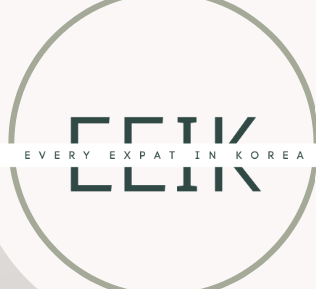What Is Hongdae Famous For? Seoul’s Youth Culture in One Neighborhood

Hongdae is famous for its street performances, indie music venues, youth fashion, and creative nightlife. Located near Hongik University in Seoul, it's where Seoul’s student and arts culture meet cheap eats, dance battles, and pop-up galleries — making it a must-visit for expats and tourists who want more than mainstream Korea.
Why Hongdae Is Known for Its Street Nightlife
Hongdae nightlife is best known for its raw, electric street performances — and they’re not just for tourists. On most evenings, especially weekends, the sidewalks near Hongdae Walking Street (Exit 9, Hongik University Station) turn into an open-air festival. You’ll see everything from K-pop dance crews and beatboxers to live painters and rap battles.
These aren't scheduled acts. They’re spontaneous, often organized by local university students or semi-pro artists looking to get noticed. If you stick around long enough, you’ll even catch street judges from the crowd — people cheer, vote, and sometimes join in.
🔍 Insider Tip: Crowds peak between 7:30 PM and 10 PM. For a better view, come just before sunset and grab a drink from a convenience store.
What makes Hongdae’s street culture special is its authenticity. It’s not curated or corporate — it’s messy, loud, and entirely self-made. That makes it one of the most honest looks at youth life in Seoul.
Hongdae’s Fame as Seoul’s Indie Music Hub
Long before K-pop dominated global charts, Hongdae was Seoul’s underground sound lab. The neighborhood is still the heart of Korea’s indie and alternative music scene — a place where punk, jazz, techno, and hip-hop all coexist, often in the same alley.
Some of the best-known live venues include:
- Club FF – For live rock and indie acts, followed by DJ sets late-night.
- Rolling Hall – Iconic for acoustic sets, solo acts, and small music festivals.
- Strange Fruit – Cozy, local-favorite for jazz, funk, and singer-songwriters.
🎧 Local Tip: Entry fees usually range from ₩10,000–15,000. Bring cash — not every venue takes cards.
Even if you’re not into live bands, Hongdae clubs offer a more DIY, experimental vibe than places in Itaewon or Gangnam. Think: fewer bottle service bros, more Converse and crop tops. Bars like M2 and B-One serve the electronic crowd, while smaller joints host underground DJ collectives and theme parties.
Whether you want to dance until 5AM or just nod your head in a dark basement with craft beer, Hongdae’s music scene delivers on originality and edge — no translation required.
Hongdae’s Famous Food Culture (On a Student Budget)
Hongdae is a foodie’s paradise on a student budget — which means you can eat like royalty for less than ₩10,000 (about $7 USD). From sizzling tteokbokki alleys to viral TikTok snack stands, the food scene here balances cheap, weird, and wildly delicious.
🔥 Must-Try Spots for First-Timers:
- Myth Jokbal (미쓰족발) – Sweet garlic braised pork feet, surprisingly addictive.
- Thanks, Nature Café – A sheep café (yes, with real sheep) that serves solid waffles.
- Hongdae Cheese Skewer Street – Stalls selling spicy chicken + melty cheese on sticks.
If you’re into Korean comfort food, head to one of the countless “김밥천국” (Kimbap Heaven) diners. Order like a local: kimchi fried rice, spam stew, or tonkatsu — all fast, filling, and under ₩6,000.
🥢 Pro Tip: Most shops don’t expect tipping. Grab water and utensils at the self-serve station — it’s normal here.
For the adventurous eater, try a rotating cast of seasonal street food:
- Tornado potatoes with cheese powder
- Stuffed hotteok pancakes
- Strawberry mochi on sticks in spring
Hongdae food hits different because it’s designed for broke students, trend-chasing tourists, and late-night dancers — all hungry for something fast, cheap, and unforgettable.
Hongdae: Seoul’s Most Youth-Driven Neighborhood
Hongdae isn’t just near a university — it’s a neighborhood that grew out of one. The area takes its name from Hongik University, one of Korea’s top art schools, and the student influence is everywhere: in the fashion, the pricing, the attitude, and even the graffiti.
The result? A place where:
- Cafés double as art studios
- Tattoo shops and thrift stores coexist with stationery stands
- Local businesses tweak menus and hours to suit broke, busy students
Even the nightlife reflects the student schedule. Most clubs and bars don’t get busy until 11PM — after part-timers clock out and class assignments are turned in.
🎨 Did you know? Hongik University’s fine arts program is what sparked Hongdae’s rise as a street art and indie culture hub back in the ’90s.
The creative undercurrent means the area evolves fast. Cafés you visit today might be themed differently next month. Fashion shops rotate inventory weekly. Every alley feels like a beta version of something newer, cheaper, and cooler.
If Gangnam is Seoul’s runway, Hongdae is the sketchbook. And it’s open to anyone willing to explore.
Other Questions About Hongdae
Is Hongdae safe at night?
Yes, Hongdae is generally safe at night. The streets are well-lit and constantly busy with students, couples, and tourists. While petty crime is rare, it’s smart to stay alert around clubs and back alleys, especially late on weekends.
Do people speak English in Hongdae?
Many shop staff, café workers, and younger locals in Hongdae speak basic English — especially near tourist-heavy areas like Exit 9. While not fluent, most can help with menus, directions, or purchases.
What’s the best time to visit Hongdae?
Late afternoon to evening is ideal — especially Thursday to Sunday. That’s when street performances begin, cafes are lively, and the full Hongdae vibe comes alive. Avoid early mornings (many places open late) and Monday nights (some clubs and cafés close).
